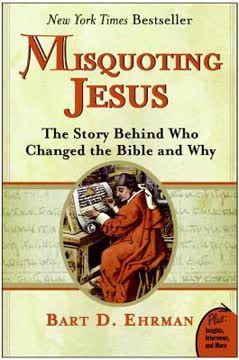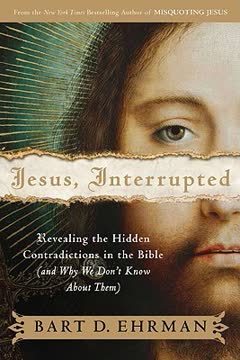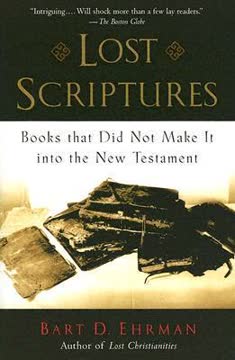Key Takeaways
1. A Personal Journey: From Fundamentalist Certainty to Textual Doubt
Before this—starting with my born-again experience in high school, through my fundamentalist days at Moody, and on through my evangelical days at Wheaton—my faith had been based completely on a certain view of the Bible as the fully inspired, inerrant word of God.
Early faith. Bart Ehrman grew up in a conservative environment, becoming a born-again Christian in high school. This led him to Moody Bible Institute and Wheaton College, where he was taught and believed in the Bible's verbal, plenary inspiration and inerrancy. His faith was deeply rooted in the absolute truth of every word of scripture.
Encountering problems. His commitment to the Bible's inerrancy faced challenges as he studied Greek and textual criticism. He realized that if God inspired the very words, but we only have error-ridden copies, the concept of inerrancy for the originals we don't possess seemed moot. This sparked his lifelong study of New Testament manuscripts.
Shift in perspective. A turning point came at Princeton Seminary when a professor suggested Mark might have made a mistake (Mark 2:26). This opened the floodgates to recognizing other potential errors and contradictions in the Bible. His view shifted from seeing the Bible as an inerrant divine blueprint to a very human book, written by human authors with their own perspectives.
2. Early Christianity Was Uniquely a Religion of Books
Judaism was unique in that it stressed its ancestral traditions, customs, and laws, and maintained that these had been recorded in sacred books, which had the status, therefore, of "scripture" for the Jewish people.
Jewish roots. Unlike most polytheistic religions of the Greco-Roman world, Judaism was a "religion of the book," centering on sacred texts like the Torah. Christianity emerged from this tradition, with Jesus himself being a Jewish teacher who interpreted scripture. This heritage made Christianity, from its inception, also a bookish religion.
Importance of writings. Various types of writings were crucial for early Christian communities:
- Letters (Paul, others) circulated for instruction and unity.
- Gospels recorded Jesus's life and teachings.
- Acts narrated the apostles' exploits.
- Apocalypses described the end times.
- Church Orders provided rules for community life.
- Apologies defended the faith against outsiders.
- Martyrologies recounted persecutions.
- Anti-heretical Tractates countered differing beliefs.
Public reading. Despite high illiteracy rates, books were central because they were read aloud in community gatherings. This ensured that even those who couldn't read could hear and learn from the texts, making written documents paramount to the faith and practice of early Christians.
3. The Problem: We Don't Have the Original Writings
Moreover, none of these copies is completely accurate, since the scribes who produced them inadvertently and/or intentionally changed them in places.
Copies, not originals. A fundamental challenge for understanding the New Testament is that the original writings (autographs) do not survive. What we possess are copies made years, often centuries, later. This means we don't have the exact words penned by the original authors.
Scribal alterations. The process of manual copying inevitably introduced changes:
- Accidental errors (slips of the pen, eye-skips).
- Intentional alterations (corrections, harmonizations, theological changes).
All scribes, whether amateur or professional, made changes, meaning every copy differs from its exemplar to some degree.
Loss of early copies. Not only are the originals lost, but so are the first copies, and copies of those copies. Our earliest surviving manuscripts are centuries removed from the originals, having passed through many layers of transcription, each introducing further variations.
4. Early Scribes Were Amateurs, Leading to Many Mistakes
It appears that the Christians copying the texts were the ones who wanted the texts—that is, they were copying the texts either for their own personal and/or communal use or they were making them for the sake of others in their community.
Non-professional copyists. In the first few centuries, Christian texts were primarily copied by literate members of the community, not trained professional scribes. These individuals, while dedicated, were more prone to errors than professionals, leading to significant variations in early manuscripts.
Evidence of complaints. Even early on, people noticed the problem. The church father Origen lamented the "great" differences among manuscripts due to scribal negligence or audacity. The pagan critic Celsus also accused Christians of altering their texts "three or four or several times over."
Intentional changes. Beyond accidental errors, scribes deliberately changed texts for various reasons:
- Correcting perceived factual errors (e.g., Mark's Isaiah quote).
- Harmonizing parallel accounts (e.g., Lord's Prayer in Luke).
- Making texts conform to their theology (e.g., emphasizing Jesus's divinity).
These intentional changes, while sometimes well-meaning, altered the original wording.
5. The Sheer Number of Manuscripts and Variations Is Vast
Perhaps, as I indicated earlier, it is best simply to leave the matter in comparative terms. There are more variations among our manuscripts than there are words in the New Testament.
Abundance of witnesses. Compared to other ancient texts, the New Testament has an extraordinary number of surviving manuscripts. Over 5,700 Greek manuscripts have been catalogued, ranging from small fragments to complete Bibles, dating from the 2nd to 16th centuries.
Types of manuscripts:
- Papyrus (2nd-7th centuries)
- Majuscule (4th-9th centuries, large letters on parchment)
- Minuscule (9th century onward, small letters on parchment)
- Lectionaries (readings for church services)
Additionally, there are thousands of manuscripts of early translations (Latin Vulgate, Syriac, Coptic, etc.) and quotations in church fathers' writings.
Countless variations. This wealth of manuscripts reveals a staggering number of differences. Estimates range from 200,000 to over 400,000 variants. This means the variations outnumber the words in the New Testament itself, highlighting the complexity of determining the original text.
6. The History of the Printed Greek Text Is Flawed
It was the inferior textual form of the Textus Receptus that stood at the base of the earliest English translations, including the King James Bible, and other editions until near the end of the nineteenth century.
Printing revolution. The invention of the printing press allowed for mass production of identical texts, ending the era of unique handwritten copies. The first major printed Bible was the Latin Vulgate. It took time for a Greek New Testament to be printed, as few Western scholars read Greek.
Erasmus's hasty edition. The first published Greek New Testament was produced by Desiderius Erasmus in 1516. Rushed to beat a competing Spanish project, it was based on only a handful of late medieval manuscripts, some incomplete or difficult to read. For Revelation, he even translated the Latin back into Greek.
The Textus Receptus. Erasmus's editions became the basis for subsequent printed Greek New Testaments for over 300 years. Printers reprinted this text, making few changes. This standardized text, known as the Textus Receptus (Received Text), was based on late, not necessarily reliable, manuscripts and included passages now known not to be original (e.g., the Johannine Comma).
7. Modern Scholarship Developed Methods to Reconstruct the Text
For sure those Various Readings existed before in the several Exemplars; Dr Mill did not make and coin them, he only exhibited them to our View.
Mill's impact. John Mill's 1707 edition, documenting 30,000 variants, shocked scholars and highlighted the text's instability. This spurred efforts to develop methods for determining the original wording from the mass of variations. Richard Bentley argued that variants were data needed to reconstruct the text.
Bengel's breakthroughs. Johann Albrecht Bengel proposed key principles:
- Lectio difficilior potior: The more difficult reading is preferred (scribes tend to simplify).
- Grouping manuscripts into families based on shared readings.
This recognized that manuscripts are related genealogically.
Westcott and Hort. Brooke Foss Westcott and Fenton John Anthony Hort's 1881 edition and Introduction revolutionized the field. They systematically grouped manuscripts into families (Syrian, Western, Alexandrian, Neutral) based on textual agreements. They argued the Alexandrian/Neutral text, found in the oldest manuscripts (Sinaiticus, Vaticanus), best preserved the original wording.
8. Significant Passages Were Altered, Affecting Meaning
It is obviously important to know whether Jesus was said to feel compassion or anger in Mark 1:41; whether he was calm and collected or in deep distress in Luke 22:43-44; and whether he was said to die by God's grace or "apart from God" in Heb. 2:9.
Impact on interpretation. Textual variants are not always minor spelling errors. Some significantly alter the meaning of a passage or even an entire book. Determining the original reading is crucial for accurate interpretation.
Examples of significant variants:
- Mark 1:41: Did Jesus feel "compassion" or become "angry" when approached by the leper? Early manuscripts and parallels in Matthew/Luke suggest "angry," portraying a different side of Jesus.
- Luke 22:43-44: The "bloody sweat" passage, depicting Jesus's agony, is missing from early manuscripts and contradicts Luke's portrayal of a calm, controlled Jesus facing death. It appears to be a later addition.
- Hebrews 2:9: Did Jesus taste death "by the grace of God" or "apart from God"? The latter reading, though poorly attested in late manuscripts, is supported by early witnesses and fits the author's theology of Jesus's full human suffering.
Translational choices. Many modern English translations, influenced by the Textus Receptus or later manuscript traditions, reflect readings that scholars now believe are not original, presenting a different message than the authors intended in these specific instances.
9. Theological Disputes Motivated Many Textual Changes
This happened whenever the scribes copying the texts were concerned to ensure that the texts said what they wanted them to say; sometimes this was because of theological disputes raging in the scribes' own day.
Diversity of early Christianity. The second and third centuries saw vast theological diversity among groups calling themselves Christian (e.g., different views on God, Christ's nature, salvation). The group that became "proto-orthodox" eventually won out, establishing creeds and the canon.
Christological controversies. Debates over Jesus's nature (human, divine, both?) were particularly influential:
- Adoptionists: Jesus was human, adopted by God (e.g., Ebionites).
- Docetists: Jesus was divine, only seemed human (e.g., Marcion).
- Separationists: Jesus was two beings, human Jesus and divine Christ (e.g., Gnostics).
Antiadoptionist changes. Scribes altered texts to emphasize Jesus's divinity or virgin birth (e.g., Luke 2:33, 1 Tim 3:16, John 1:18 variant "unique God").
Antidocetic changes. Scribes added material stressing Jesus's real humanity, suffering, and physical body (e.g., Luke 22:43-44 bloody sweat, Luke 22:19b-20 institution narrative, Luke 24:12 Peter at tomb).
Antiseparationist changes. Scribes modified texts to counter the idea that Christ left Jesus (e.g., Hebrews 2:9 "grace of God" vs. "apart from God," Mark 15:34 "mocked me" vs. "forsaken me").
10. Social Conflicts Also Influenced How Texts Were Copied
These controversies also played some role in the transmission of the texts of scripture.
Internal disputes: Women's roles. Debates existed about women's roles in the church, despite their prominence in early communities (Paul's co-workers, apostles like Junia). Later texts and scribal changes sought to limit women's public roles.
- 1 Corinthians 14:34-35 ("women keep silent") is likely a scribal addition, contradicting Paul's allowance for women praying/prophesying in chapter 11.
- Changes minimized women's prominence (e.g., Romans 16:7 Junia, Acts 17:4 prominent women, reversing Aquila and Priscilla).
External conflicts: Jews. Despite Christianity's Jewish origins, it quickly became distinct and often anti-Jewish. Christians claimed Jews rejected their own Messiah and misinterpreted their scriptures.
- Luke 23:34 ("Father, forgive them") was likely deleted by scribes who believed God had not forgiven the Jews (evidenced by Jerusalem's destruction).
- Changes heightened Jewish culpability for Jesus's death (e.g., Matt 27:25 "His blood be upon us," Matt 27:26 Pilate handing Jesus to "them").
External conflicts: Pagans. Christians faced opposition from pagans who saw them as antisocial and their beliefs/founder as ludicrous. Pagan critics mocked Jesus's low status and crucifixion.
- Mark 1:41 ("angry" changed to "compassion") may be an apologetic change to portray Jesus as appropriately divine (not subject to petty anger).
- Mark 6:3 ("the carpenter") changed to "son of the carpenter" in some manuscripts, possibly to counter pagan mockery of Jesus's low-class trade.
11. Textual Criticism Reveals the Human Side of Scripture
The Bible began to appear to me as a very human book. Just as human scribes had copied, and changed, the texts of scripture, so too had human authors originally written the texts of scripture.
Beyond establishing originals. Textual criticism is not just about reconstructing the earliest text. It also involves understanding how and why texts were changed by scribes. These alterations provide insight into the beliefs, concerns, and social contexts of the copyists.
Scribes as interpreters. Scribes were not passive copyists; they were active participants in the transmission process, often interpreting and modifying the text based on their own theological views and the controversies of their day. Their changes reflect the living, evolving nature of early Christian thought.
A human book. The study of textual variants reveals the Bible as a product of human hands and minds, shaped by the historical, social, and theological worlds of its authors and copyists. Recognizing these human elements is crucial for understanding the Bible's history and diverse messages.
Last updated:
FAQ
1. What is Misquoting Jesus: The Story Behind Who Changed the Bible and Why by Bart D. Ehrman about?
- Exploration of Textual Changes: The book investigates how the New Testament was altered over centuries by scribes, both accidentally and intentionally, affecting the meaning and interpretation of scripture.
- Personal and Scholarly Journey: Ehrman shares his transition from a conservative evangelical upbringing to a critical scholar, using his own story to frame the book’s inquiry.
- Introduction to Textual Criticism: It introduces readers to the field of textual criticism, explaining how scholars attempt to reconstruct the original New Testament from error-prone copies.
- Impact on Faith and Theology: The book discusses how these manuscript variations challenge traditional views of biblical inerrancy and encourage a more nuanced understanding of scripture.
2. Why should I read Misquoting Jesus by Bart D. Ehrman?
- Accessible Introduction to Textual History: The book offers a clear, engaging look at how the New Testament was transmitted and changed, making complex scholarship understandable for general readers.
- Critical Perspective on Scripture: Ehrman encourages readers to think critically about the Bible’s origins, showing it as a dynamic, human-shaped document rather than a static, unaltered text.
- Relevance to Modern Faith and Culture: Understanding these textual changes is crucial for anyone interested in theology, biblical studies, or the cultural impact of the Bible.
- Engaging Narrative Style: Ehrman’s personal journey and detective-like approach to scholarship make the book both informative and compelling.
3. What are the key takeaways from Misquoting Jesus by Bart D. Ehrman?
- Manuscript Variations Matter: The New Testament has thousands of textual variants, some of which significantly affect interpretation and doctrine.
- Scribes as Influencers: Both accidental mistakes and intentional changes by scribes have shaped the Bible as we know it.
- Textual Criticism is Essential: The science of textual criticism is necessary to approximate the original wording of the New Testament.
- Faith and History Intersect: The book challenges readers to see the Bible as a product of history, shaped by human hands and historical circumstances.
4. What is textual criticism, as explained in Misquoting Jesus by Bart D. Ehrman?
- Definition and Purpose: Textual criticism is the scholarly discipline aimed at reconstructing the original wording of ancient texts by comparing surviving manuscripts with variations.
- Methods Used: Scholars use linguistic, historical, and comparative analysis to identify both accidental errors and intentional alterations in manuscripts.
- Importance for Interpretation: Knowing the exact words is crucial for understanding the Bible’s meaning and historical context.
- No Surviving Originals: Since no original New Testament manuscripts exist, textual critics rely on thousands of copies, each with its own set of errors and changes.
5. How did Bart D. Ehrman’s personal background influence his approach in Misquoting Jesus?
- Conservative Beginnings: Ehrman was raised in a moderate Episcopal family and later became a born-again Christian, embracing biblical inerrancy.
- Academic Exposure: His studies at Moody Bible Institute, Wheaton College, and Princeton Theological Seminary exposed him to the complexities and variations in biblical manuscripts.
- Shift in Belief: Encountering genuine mistakes and human authorship in the Bible led Ehrman to rethink the nature and authority of scripture.
- Personal Narrative: His journey from faith to critical scholarship provides a relatable framework for readers grappling with similar questions.
6. What kinds of changes did scribes make to New Testament manuscripts, according to Misquoting Jesus?
- Accidental Changes: Scribes made errors such as misspellings, skipped lines, and misread abbreviations, often due to the lack of spaces or punctuation in ancient scripts.
- Intentional Alterations: Some changes were made to harmonize conflicting accounts, clarify theology, or support doctrinal positions, such as emphasizing Jesus’s divinity or the virgin birth.
- Famous Additions: Notable later insertions include the story of the woman taken in adultery (John 7:53-8:12) and the last twelve verses of Mark.
- Impact on Doctrine: These changes have influenced how key passages and doctrines are understood, highlighting the human element in the Bible’s transmission.
7. What are the main methods of textual criticism described in Misquoting Jesus by Bart D. Ehrman?
- Rational Eclecticism: Modern critics weigh both external (manuscript evidence) and internal (authorial style, likelihood of scribal change) factors to determine the most original reading.
- External Evidence: Manuscript age, reliability, and geographical distribution are considered, with older manuscripts generally preferred but not uncritically.
- Internal Evidence: Scholars assess what the author likely wrote and what a scribe was likely to have changed, often favoring the more difficult reading as original.
- Manuscript Families: Classification into families (Byzantine, Western, Alexandrian, Neutral) helps determine which textual traditions are more reliable, with Alexandrian often favored.
8. How did early Christian theological disputes influence changes in the New Testament text, according to Misquoting Jesus?
- Countering Adoptionism: Scribes altered texts to emphasize Jesus’s divinity, such as changing “who was manifested in the flesh” to “God was manifested in the flesh.”
- Opposing Docetism: Additions like Luke 22:43-44 (Jesus’s agony) were made to stress his real humanity against claims he only appeared human.
- Combating Gnostic Separationism: Texts were changed to affirm the unity of Jesus’s divine and human natures, such as altering Hebrews 2:9.
- Doctrinal Motivations: These changes reflect the intense theological debates of the early centuries, with scribes shaping scripture to support their views.
9. How did social conflicts, such as debates over women’s roles, affect the transmission of the New Testament in Misquoting Jesus?
- Women’s Early Leadership: Early Christian communities included prominent female leaders, such as Junia, called “foremost among the apostles.”
- Textual Suppression: Scribes sometimes altered texts to diminish women’s roles, changing names or inserting verses to restrict women’s speech and leadership.
- Reflecting Community Disputes: These changes mirror the ambivalence and disputes over women’s roles in the early church.
- Long-term Impact: Such alterations have influenced how scripture has been used to justify limiting women’s roles in Christian worship and leadership.
10. How did anti-Jewish sentiment and pagan opposition shape New Testament manuscripts, according to Misquoting Jesus by Bart D. Ehrman?
- Rising Anti-Judaism: As Christianity distanced itself from Judaism, scribes altered or omitted passages that portrayed Jews positively or lessened their culpability in Jesus’s death.
- Textual Omissions: Jesus’s prayer for his executioners (Luke 23:34) was sometimes omitted to avoid forgiving Jews, reflecting prevailing attitudes.
- Apologetic Changes: Scribes modified texts to counter pagan criticisms, such as changing “Jesus the carpenter” to “son of the carpenter” to elevate his status.
- Defending the Faith: These changes show scribes acting as defenders, shaping the text to align with evolving Christian identity and external challenges.
11. How do specific textual variants discussed in Misquoting Jesus affect the interpretation of Jesus’s character and actions?
- Jesus’s Emotions: Variants like “angry” versus “compassionate” in Mark 1:41 change the portrayal of Jesus from wrathful to tender, affecting theological interpretation.
- Jesus’s Humanity: The inclusion or omission of verses describing Jesus’s agony (Luke 22:43-44) influences whether he is seen as deeply anguished or calm before his arrest.
- Jesus’s Death: Variants in Hebrews 2:9 (“apart from God” vs. “by the grace of God”) alter the understanding of Jesus’s death as either forsaken or an act of divine grace.
- Doctrinal Consequences: These textual decisions have profound implications for doctrines about Jesus’s nature, emotions, and salvific work.
12. What does Bart D. Ehrman conclude about the nature of scripture and the role of scribes in Misquoting Jesus?
- Scripture as a Human Product: Ehrman argues that the New Testament is a human book, shaped by authors and scribes with their own beliefs and intentions.
- Interpretation is Inevitable: Reading and copying scripture always involves interpretation, meaning the text’s meaning is continually reshaped.
- No Perfect Original: While original texts existed, surviving manuscripts are copies with variations, making perfect reconstruction impossible.
- Challenge to Inerrancy: These realities challenge traditional views of biblical inerrancy and inspiration, urging readers to approach the Bible as a complex historical document.
Review Summary
Misquoting Jesus explores how the New Testament has been altered over time through copying errors and intentional changes. Ehrman presents compelling evidence of textual variations and their impact on Christian doctrine. While some readers find the book eye-opening and praise its scholarly approach, others argue that these findings are already known within Christianity. The book challenges biblical inerrancy and encourages critical examination of scripture. Despite its repetitive nature, many readers consider it a must-read for those interested in biblical history and textual criticism.
Similar Books
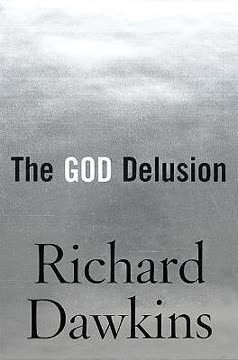
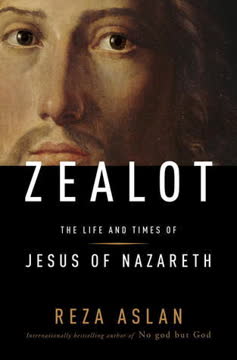
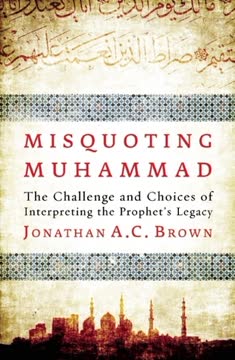
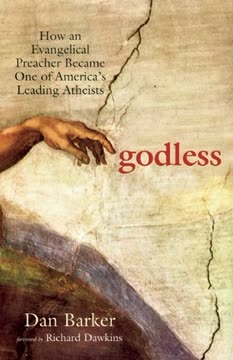
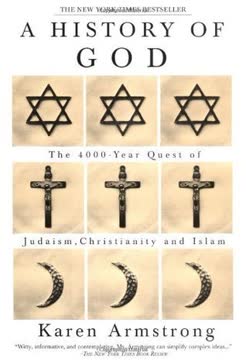
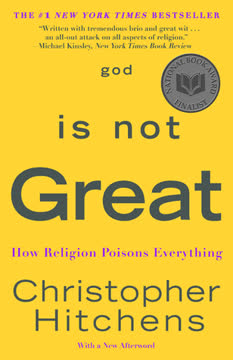
Download PDF
Download EPUB
.epub digital book format is ideal for reading ebooks on phones, tablets, and e-readers.
